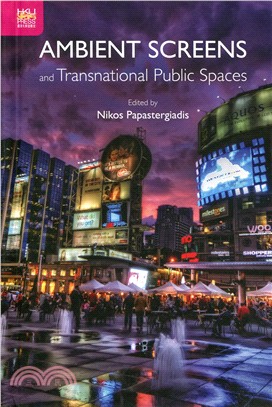| FindBook |
有 3 項符合
Ambient Screens and Transnational Public Spaces的圖書 |
 |
Ambient Screens and Transnational Public Spaces 作者:Nikos Papastergiadis 出版社:香港大學出版社 出版日期:2016-09-16 規格: / 精裝 / 264頁 |
| 圖書選購 |
| 型式 | 價格 | 供應商 | 所屬目錄 | $ 2140 |
科學‧科普 |
$ 2519 |
中文書 |
$ 2519 |
社會 |
|---|
| 圖書館借閱 |
| 國家圖書館 | 全國圖書書目資訊網 | 國立公共資訊圖書館 | 電子書服務平台 | MetaCat 跨館整合查詢 |
| 臺北市立圖書館 | 新北市立圖書館 | 基隆市公共圖書館 | 桃園市立圖書館 | 新竹縣公共圖書館 |
| 苗栗縣立圖書館 | 臺中市立圖書館 | 彰化縣公共圖書館 | 南投縣文化局 | 雲林縣公共圖書館 |
| 嘉義縣圖書館 | 臺南市立圖書館 | 高雄市立圖書館 | 屏東縣公共圖書館 | 宜蘭縣公共圖書館 |
| 花蓮縣文化局 | 臺東縣文化處 |
|
|
Large public screens have now become a ubiquitous part of the contemporary cityscape. Far from being simply oversized televisions, the media experts contributing to Ambient Screens and Transnational Public Spaces put forward a strong case that such screens could serve as important sites for cultural exchange.
Advances in digital technology spell the possibilities of conducting mobile modes of interaction across national boundaries, and in the process expose the participants to novel sensory experiences, giving rise to a new form of public culture. Understanding this phenomenon calls for a reconceptualization of “public space” and “ambience,” as well as connecting the two concepts with each other. This pioneering study of the impact of media platforms on urban cultural life presents a theoretical analysis and a history of screens, followed by discussions of site-specific urban screen practices on five continents. There is also a substantial examination of the world’s first real-time cross-cultural exchange via the networking of large public screens located in Melbourne and Seoul.
- 作者: Nikos Papastergiadis
- 出版社: 香港大學出版社 出版日期:2016-09-16 ISBN/ISSN:9789888208920
- 語言:繁體中文 裝訂方式:平裝 頁數:264頁
- 類別: 中文書> 社會科學> 社會
|











